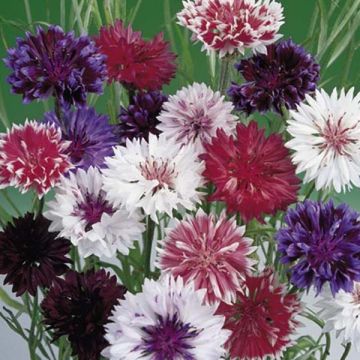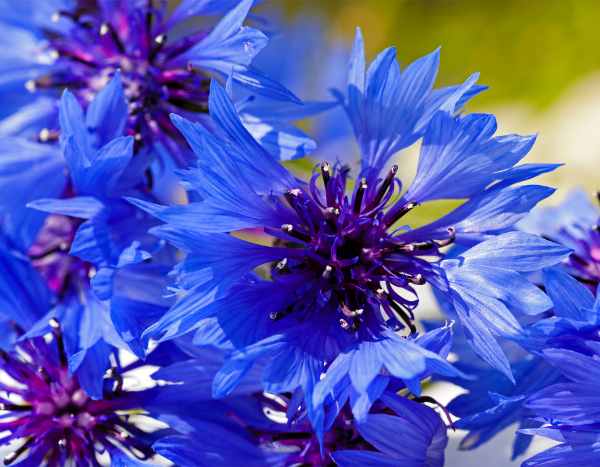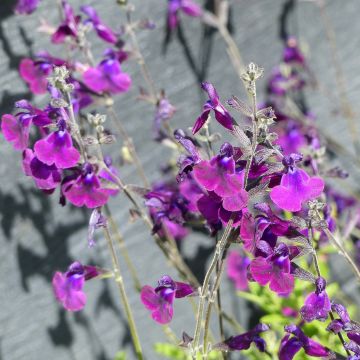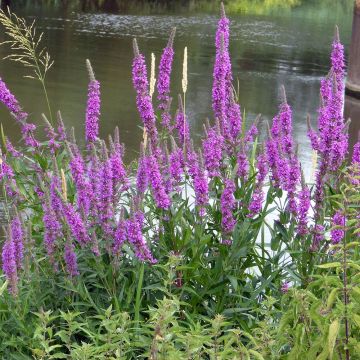

Centaurea montana Sulphurea
Centaurea montana Sulphurea
Centaurea montana Sulphurea
Perennial Cornflower, Great Blue-bottle, Mountain Bluet, Mountain Centaury
Disgusted.... I placed an order specifically for this young plant... and on the label, it's a very common blue centaury... I can see that there are still some in stock!!! They are offering me a credit note for the price of the plant so that I can reorder it. But what about the £6.90 shipping fee? Disappointed..........
Pierre André, 05/05/2020
Special offer!
Receive a €20 voucher for any order over €90 (excluding delivery costs, credit notes, and plastic-free options)!
1- Add your favorite plants to your cart.
2- Once you have reached €90, confirm your order (you can even choose the delivery date!).
3- As soon as your order is shipped, you will receive an email containing your voucher code, valid for 3 months (90 days).
Your voucher is unique and can only be used once, for any order with a minimum value of €20, excluding delivery costs.
Can be combined with other current offers, non-divisible and non-refundable.
Home or relay delivery (depending on size and destination)
Schedule delivery date,
and select date in basket
This plant carries a 12 months recovery warranty
More information
We guarantee the quality of our plants for a full growing cycle, and will replace at our expense any plant that fails to recover under normal climatic and planting conditions.
Would this plant suit my garden?
Set up your Plantfit profile →
Description
Centaurea montana 'Sulphurea' is a lovely form with pale yellow flowers of the perennial cornflower that needs no introduction. Equally robust, this plant forms beautiful clumps of grey-green and woolly foliage that are adorned with charming feathery yellow flower heads from May to August. The mountain cornflower is hardy and easy to grow. Perfect in large countryside borders or in a not too arid rockery.
Native to the mountains of Europe, Centaurea montana is a herbaceous perennial plant of the Asteraceae family that develops from trailing rhizomes. This medicinal and ornamental plant has been cultivated in gardens for a long time. The 'Sulphurea' form, from which it originates, has identical deciduous foliage, pubescent, giving it a woolly appearance, especially on the underside of the leaves. It forms spreading clumps, 40 cm (16in) tall when in bloom, 20 cm (8in) for the foliage, and 30 cm (12in) wide, or even much wider with age, as it spreads through its trailing rhizomes. Its leaves are 5 to 6 cm (2in) long, lanceolate in shape, and their colour is a green tinged with grey. Flowering takes place from spring to summer, for 2 to 3 months, depending on the regions. The floral bud is very decorative, an involucre composed of tight bracts, it looks a bit like a small artichoke. The uniqueness of this selection lies in the pale yellow colour of the flowers, borne on stiff stems of 40 cm (16in). These have large heads, 5 cm (2in) in diameter, with a centre that is almost white streaked with black, surrounded by longer petals, tapered and cut at their ends, which are pale yellow. It is a nectar plant producing high calorie pollen, highly appreciated by pollinating insects, particularly bumblebees.
TThe perennial cornflower needs no introduction, as it is an excellent and adaptable perennial plant with robust qualities, whose blue flowers have adorned many gardens for centuries. It grows everywhere, in heavy or light soils and in sun or shade. Coming back into fashion, cornflowers are returning with infinitely refined new colours. 'Sulphurea' pairs wonderfully with the blue flowers of the typical species or even with the unbelievable blue of wild chicory. It can also be accompanied by small grasses like Stipa or golden-leaved Carex. It will find its place in a rockery, in borders, along a pathway or in short grass meadow, and can be used to create beautiful country-style bouquets, or as dried flower heads which remain decorative for a long time.
Centaurea montana Sulphurea in pictures
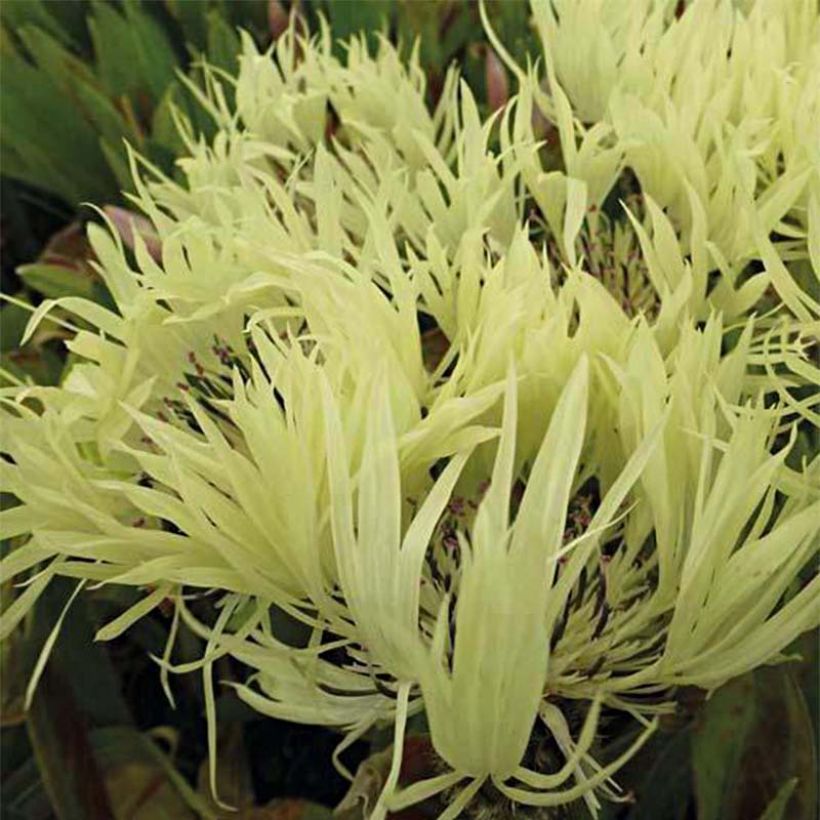



Flowering
Foliage
Plant habit
Botanical data
Centaurea
montana
Sulphurea
Asteraceae
Perennial Cornflower, Great Blue-bottle, Mountain Bluet, Mountain Centaury
Cultivar or hybrid
Other Centaurea
View all →Planting and care
Plant the centaurea montana 'Sulphurea' in ordinary, preferably well-drained soil, even clay or limestone or poor soil, in full sun or partial shade. It tolerates heavy and moist soils but prefers stony or occasionally dry soils. Water it well at planting and maintain regular watering for the first 8 weeks. After flowering, cut back the flower stalks to the ground, to encourage a second flowering in late summer.
The perennial cornflower is prone to powdery mildew in summer. As soon as the foliage is affected (it becomes covered in "white"), after the first flowering, prune the plant close to the ground. After a few waterings, new foliage as well as a second flowering will develop.
Planting period
Intended location
Care
Planting & care advice
-
, onOrder confirmed
Reply from on Promesse de fleurs
Similar products
Haven't found what you were looking for?
Hardiness is the lowest winter temperature a plant can endure without suffering serious damage or even dying. However, hardiness is affected by location (a sheltered area, such as a patio), protection (winter cover) and soil type (hardiness is improved by well-drained soil).

Photo Sharing Terms & Conditions
In order to encourage gardeners to interact and share their experiences, Promesse de fleurs offers various media enabling content to be uploaded onto its Site - in particular via the ‘Photo sharing’ module.
The User agrees to refrain from:
- Posting any content that is illegal, prejudicial, insulting, racist, inciteful to hatred, revisionist, contrary to public decency, that infringes on privacy or on the privacy rights of third parties, in particular the publicity rights of persons and goods, intellectual property rights, or the right to privacy.
- Submitting content on behalf of a third party;
- Impersonate the identity of a third party and/or publish any personal information about a third party;
In general, the User undertakes to refrain from any unethical behaviour.
All Content (in particular text, comments, files, images, photos, videos, creative works, etc.), which may be subject to property or intellectual property rights, image or other private rights, shall remain the property of the User, subject to the limited rights granted by the terms of the licence granted by Promesse de fleurs as stated below. Users are at liberty to publish or not to publish such Content on the Site, notably via the ‘Photo Sharing’ facility, and accept that this Content shall be made public and freely accessible, notably on the Internet.
Users further acknowledge, undertake to have ,and guarantee that they hold all necessary rights and permissions to publish such material on the Site, in particular with regard to the legislation in force pertaining to any privacy, property, intellectual property, image, or contractual rights, or rights of any other nature. By publishing such Content on the Site, Users acknowledge accepting full liability as publishers of the Content within the meaning of the law, and grant Promesse de fleurs, free of charge, an inclusive, worldwide licence for the said Content for the entire duration of its publication, including all reproduction, representation, up/downloading, displaying, performing, transmission, and storage rights.
Users also grant permission for their name to be linked to the Content and accept that this link may not always be made available.
By engaging in posting material, Users consent to their Content becoming automatically accessible on the Internet, in particular on other sites and/or blogs and/or web pages of the Promesse de fleurs site, including in particular social pages and the Promesse de fleurs catalogue.
Users may secure the removal of entrusted content free of charge by issuing a simple request via our contact form.
The flowering period indicated on our website applies to countries and regions located in USDA zone 8 (France, the United Kingdom, Ireland, the Netherlands, etc.)
It will vary according to where you live:
- In zones 9 to 10 (Italy, Spain, Greece, etc.), flowering will occur about 2 to 4 weeks earlier.
- In zones 6 to 7 (Germany, Poland, Slovenia, and lower mountainous regions), flowering will be delayed by 2 to 3 weeks.
- In zone 5 (Central Europe, Scandinavia), blooming will be delayed by 3 to 5 weeks.
In temperate climates, pruning of spring-flowering shrubs (forsythia, spireas, etc.) should be done just after flowering.
Pruning of summer-flowering shrubs (Indian Lilac, Perovskia, etc.) can be done in winter or spring.
In cold regions as well as with frost-sensitive plants, avoid pruning too early when severe frosts may still occur.
The planting period indicated on our website applies to countries and regions located in USDA zone 8 (France, United Kingdom, Ireland, Netherlands).
It will vary according to where you live:
- In Mediterranean zones (Marseille, Madrid, Milan, etc.), autumn and winter are the best planting periods.
- In continental zones (Strasbourg, Munich, Vienna, etc.), delay planting by 2 to 3 weeks in spring and bring it forward by 2 to 4 weeks in autumn.
- In mountainous regions (the Alps, Pyrenees, Carpathians, etc.), it is best to plant in late spring (May-June) or late summer (August-September).
The harvesting period indicated on our website applies to countries and regions in USDA zone 8 (France, England, Ireland, the Netherlands).
In colder areas (Scandinavia, Poland, Austria...) fruit and vegetable harvests are likely to be delayed by 3-4 weeks.
In warmer areas (Italy, Spain, Greece, etc.), harvesting will probably take place earlier, depending on weather conditions.
The sowing periods indicated on our website apply to countries and regions within USDA Zone 8 (France, UK, Ireland, Netherlands).
In colder areas (Scandinavia, Poland, Austria...), delay any outdoor sowing by 3-4 weeks, or sow under glass.
In warmer climes (Italy, Spain, Greece, etc.), bring outdoor sowing forward by a few weeks.








































